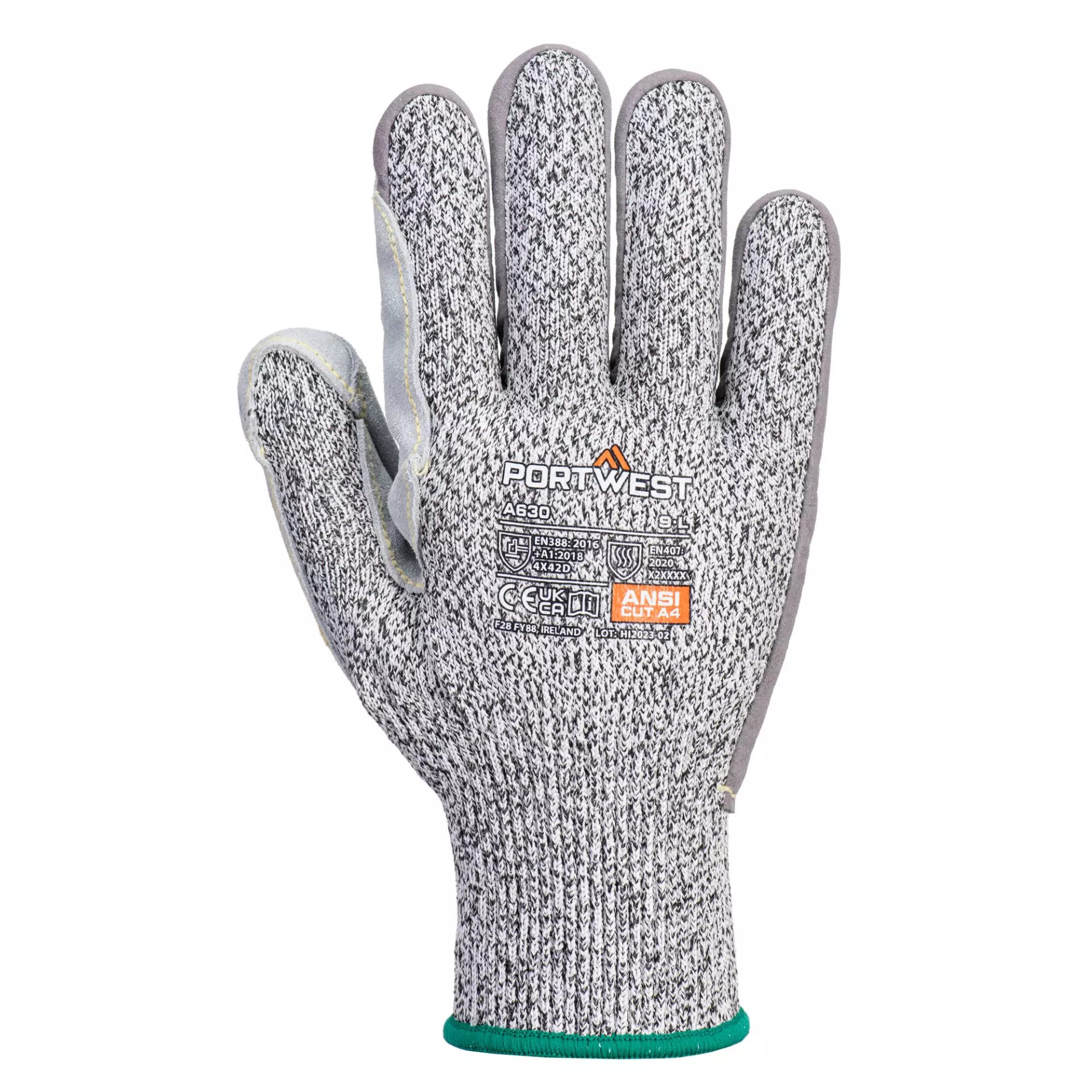
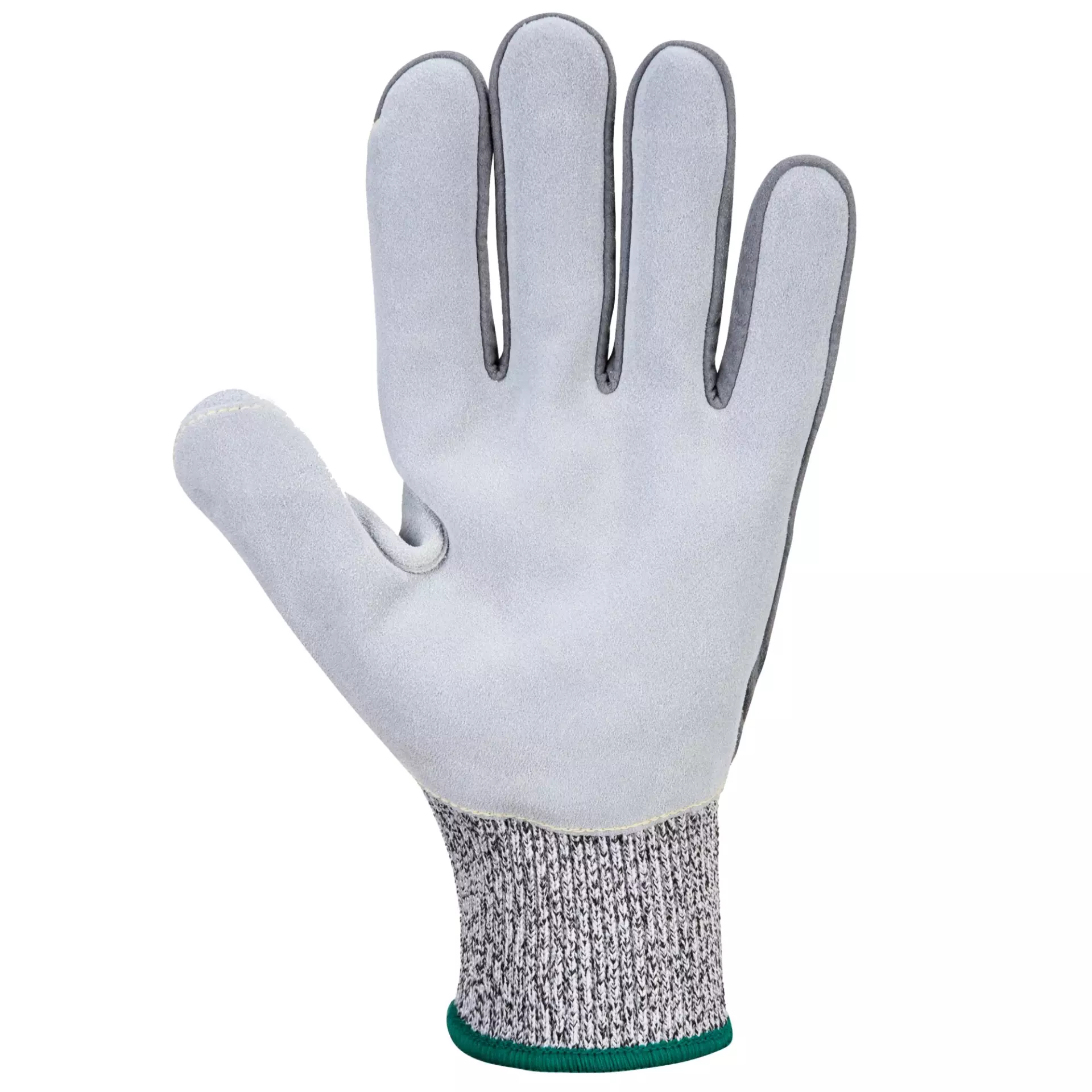
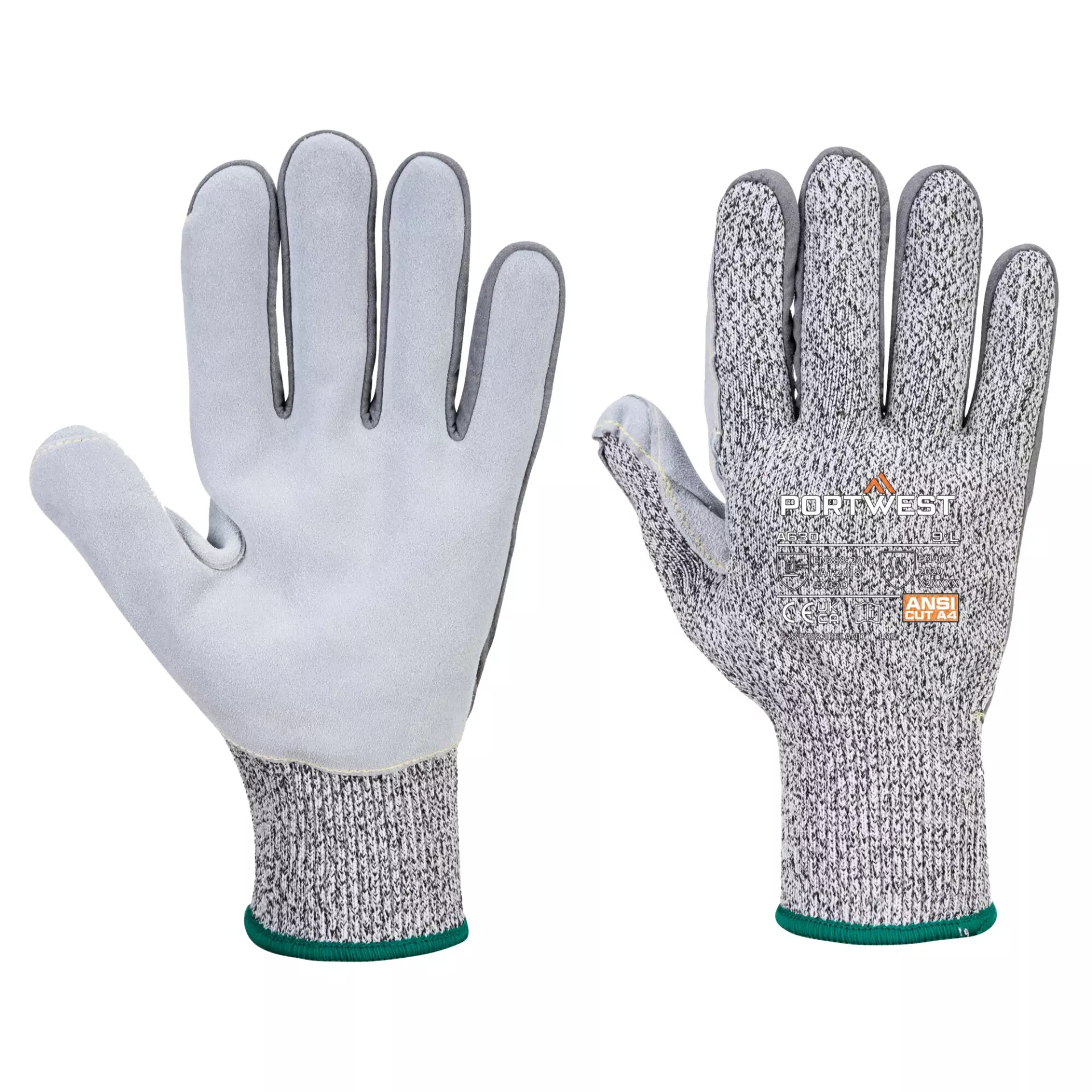
Features You'll Love
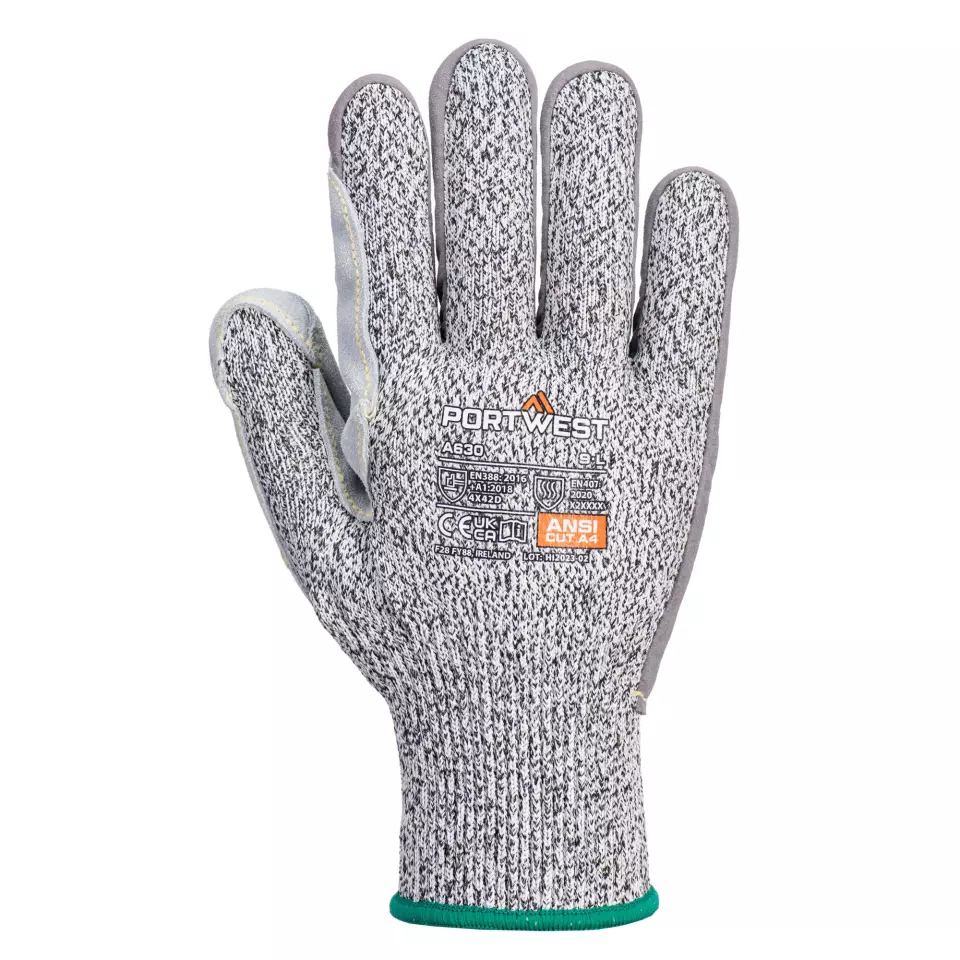
Support · Reinforced Fingers
Enhanced finger protection ensures durability and confidence when handling sharp objects, keeping your hands safer.
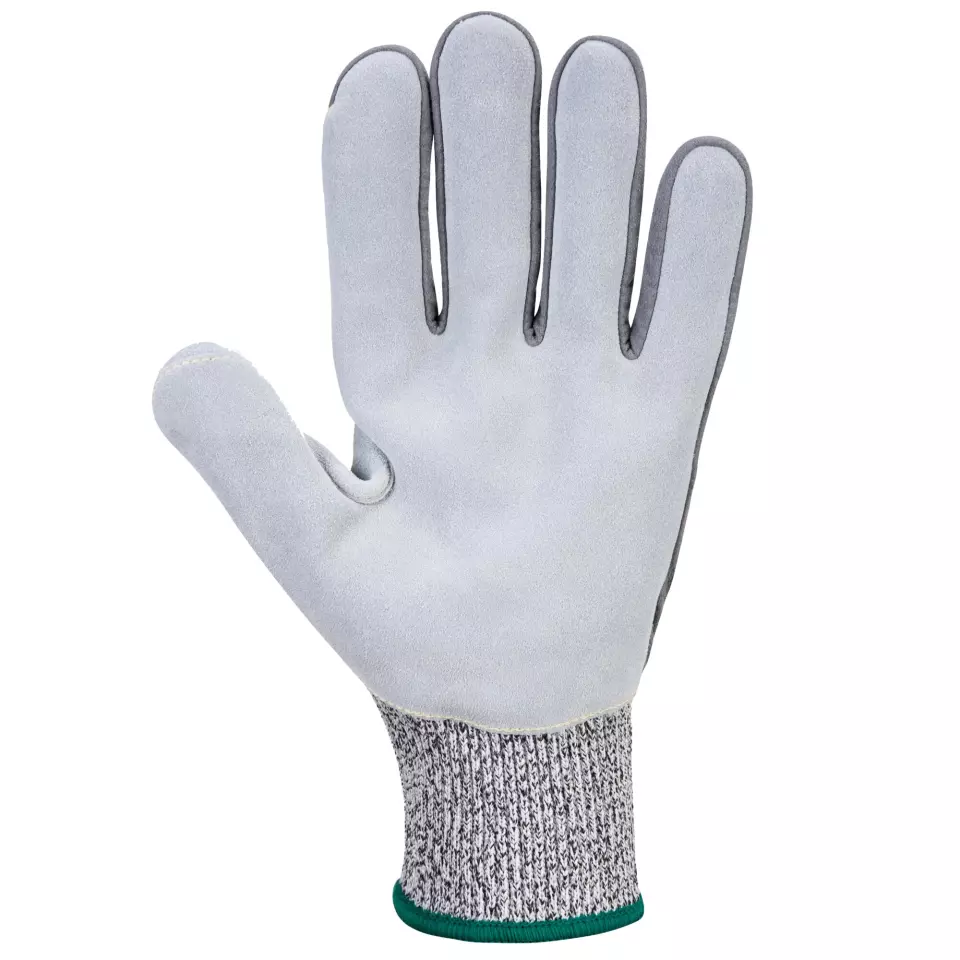
Support · Reinforced Palm
Reinforced palm provides durable protection against cuts and abrasions, keeping your hands safe and extending glove life.

EN 388 · Cut Resistance, ISO 13997 Level D, Abrasion Resistance Level 4, Tear Resistance Level 4, Puncture Resistance Level 2
EN 407 · Heat Contact Level 2
Offers strong protection against cuts from utility knives, glass edges, and sheet metal.
Offers the highest level of protection against intense rubbing and wear from rough materials.
Offers the highest level of protection against tearing, withstanding a strong force before ripping.
Withstands moderate force from sharp objects like heavy-duty splinters or wires.
This product provides protection from contact heat up to 250°C for at least 15 seconds. It is ideal for tasks where you might briefly handle hot items, such as in kitchens or workshops.
Portwest
Razor - Lite Glove, Grey, 12 pairs
Razor - Lite Glove, Grey, 12 pairs
4.9 / 5
145,71 €
Price per 12 pairs
12,14 € / pair
Choose size
Free delivery
Features You'll Love

Support · Reinforced Fingers
Enhanced finger protection ensures durability and confidence when handling sharp objects, keeping your hands safer.

Support · Reinforced Palm
Reinforced palm provides durable protection against cuts and abrasions, keeping your hands safe and extending glove life.

EN 388 · Cut Resistance, ISO 13997 Level D, Abrasion Resistance Level 4, Tear Resistance Level 4, Puncture Resistance Level 2
EN 407 · Heat Contact Level 2
Offers strong protection against cuts from utility knives, glass edges, and sheet metal.
Offers the highest level of protection against intense rubbing and wear from rough materials.
Offers the highest level of protection against tearing, withstanding a strong force before ripping.
Withstands moderate force from sharp objects like heavy-duty splinters or wires.
This product provides protection from contact heat up to 250°C for at least 15 seconds. It is ideal for tasks where you might briefly handle hot items, such as in kitchens or workshops.
Product description
Professional cut-resistant glove featuring Level D cut protection with reinforced leather palm construction for enhanced heat resistance and durability. The 13-gauge liner provides precise fitting while aramid stitching offers maximum burn protection, making it suitable for glass handling and working with hot items up to 100°C for short periods. Additional reinforcement on palm and forefinger areas ensures extended glove life and superior grip performance.
Product Features:
- Level D cut resistance with reinforced leather palm
- 13 gauge liner constructed for durability and precise fitting
- Additional reinforced protection on palm and forefinger areas
- Reinforced Aramid stitching for maximum durability and burn protection
- Tested for both cut and heat protection
Recommended Applications:
- Glass handling
- Working with hot items up to 100°C for short periods
- Tasks requiring reinforced abrasion resistance
Standards:
- CE certified
- EN ISO 21420: 2020 Dexterity 1
- EN 388: 2016 + A1: 2018 (4X42D)
- EN 407: 2020 (X1XXXX)
- ANSI/ISEA 105: 2016 CUT Level (A4)
- ANSI/ISEA 105: 2016 ABRASION Level (5)
- ANSI/ISEA 105: 2016 PUNCTURE Level (3)